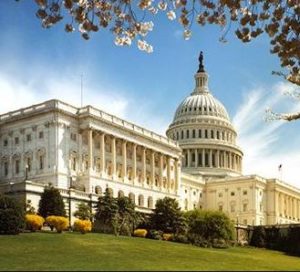Inside D.C.
Enter the federal judges…

I once had a boss who honestly believed – at least he used to say it all the time – “it ain’t illegal unless you get caught,” which I took to mean the end was far more important than the means. The Trump administration seems to have embraced a similar philosophy along the lines of “we can propose/order/withdraw/repeal/suspend a rule or program, and until Congress or the courts tell us we’re wrong…”
It’s no surprise Congress in an election year finds doing nothing to be the politically safest strategy. There may be a spurt of boldness in one chamber or the other. A couple of weeks ago, the Senate approved nonbinding legislation to curb the president’s tariff authority for national security reasons, but well aware the House wouldn’t touch the bill, there was very little risk in the move.
However, the courts are proving more aggressive. Just this week, one of global production agriculture’s most widely used crop chemicals is firmly in the judicial crosshairs, as a federal appeals court ordered EPA to “quit stalling” and revoke all tolerances and cancel all registrations for the insecticide chlorpyrifos.
The 9th Circuit Court of Appeals gave EPA 60 days to effectively ban the use of chlorpyrifos, reversing in a major way a March, 2017, Trump decision to delay a safety review of the chemical until 2021. The opinion holds the Trump EPA action violated not only the Federal Insecticide, Fungicide & Rodenticide Act (FIFRA), but also the federal Food, Drug & Cosmetic Act (FFDCA). The judges decided that when then EPA Administrator Scott Pruitt reversed an Obama EPA order to ban chlorpyrifos food tolerances, the agency “did not make a finding of reasonable certainty that the tolerances were safe” as required under the FFDCA. Instead, the agency found “significant uncertainty” as to any negative health impacts, a finding that doesn’t comport with FFDCA requirements. Similarly, the court said “chlorpyrifos does not meet the statutory requirements for registration under FIFRA” which cites the FFDCA safety standard.”
A federal judge also slapped down President Trump’s September, 2017, decision to suspend the Deferred Action for Childhood Arrivals (DACA) program, a program created by President Obama providing deferred deportation and work permits for about 750,000 immigrants brought illegally to the U.S. as minor children. When Trump decided to shut DACA down, a federal judge this week deemed Trump’s action to be “arbitrary and capricious” and that the decision was “unlawful and must be set aside.” That federal judge then ordered the administration to reinstate the program.
U.S. District Court Judge John Bates, appointed to the bench by President Bush, said he would delay his order until August 23, to give the administration time to decide if it plans to appeal. Bates is the judge who in April, ordered the White House to restart the DACA program, including taking new applications. He stayed his order for 90 days to give the government a chance to argue why DACA should be ended. The government apparently failed to answer Bates’ concerns in the earlier ruling, hence the court order to reinstate DACA.
A pattern is beginning to emerge. The White House should take note.

Add Comment